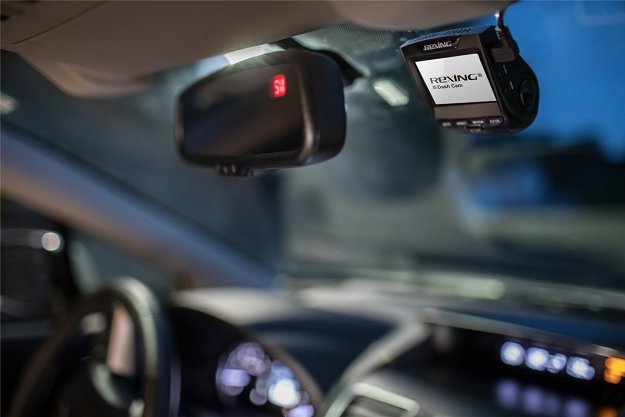Besides some brief glimpses of its covered EV launching and crossing the finish line (it’s unclear if FF used a 1/8-mile or 1/4-mile stretch), Faraday’s vice president of engineering describes the process of cutting the production car’s acceleration numbers down from 4.0 seconds to 3.4 seconds to below 3.0 seconds. In the last race against Tesla’s Model X, we see the FF prototype besting its rival, which has an estimated 0 to 60 mph time of 2.9 seconds.
We will have to wait until the car’s reveal early next month to get official acceleration and top speed stats, but Faraday’s full video has officially raised expectations.
Drag race teaser
Faraday Future continues to tease its first production model, despite reports that it will be delayed. Last week, it was a peek at the nose of its new car, and this week the electric vehicle startup pits a prototype against some of the world’s quickest cars.
The brief teaser shows a covered Faraday Future prototype pulling up to the starting line on a drag racing strip to face off against a Bentley Bentayga, Tesla Model X, and Ferrari 488GTB — unfortunately, we don’t see the results of the race in this clip. This may seem like a random assortment of relatively fast cars, but it actually says a great deal about Faraday’s first model.
Let’s first address the Ferrari. It’s fast. That is probably the only qualifier for its being part of this “race.” Showing its prototype out accelerating a sub-3.0 second 0 to 60 mph car (that costs well over $200,000) is a pretty gutsy and eye-opening declaration. The Tesla Model X matchup is equally interesting, as Tesla is Faraday’s main rival, and the Model X is the current halo model. Finally, the Bentley Bentayga may seem out of left field, but its potent 6.0-liter V12, high top speed, and hefty price rag may show how much quicker an advanced electric crossover can be in a straight line.
We are intrigued to learn the results of the drag race teaser, but we’re equally curious about whether Faraday Future’s production car, which is set to be revealed during January’s CES) will be assembled anytime soon. Work on the company’s factory in Las Vegas has halted and Faraday’s Chinese benefactor, tech company LeEco, is running low on cash.
A former employee has called Faraday’s plans a major long shot. The Las Vegas plant won’t resume construction until 2017, there are reports of FF holding millions of dollars in debts and the company’s caged communication strategy doesn’t give us any hints about corporate health.
Everything may perhaps ride on the CES concept, so expect several new rumors and teasers to break before January.
Article published in December 2016. Updated on 12-16-2016 by Miles Branman: Added video clip of prototype.
Editors' Recommendations
- Oppo releases photos taken with its prototype Under Screen Camera for phones
- Faraday Future FF91 first drive: Raw power


